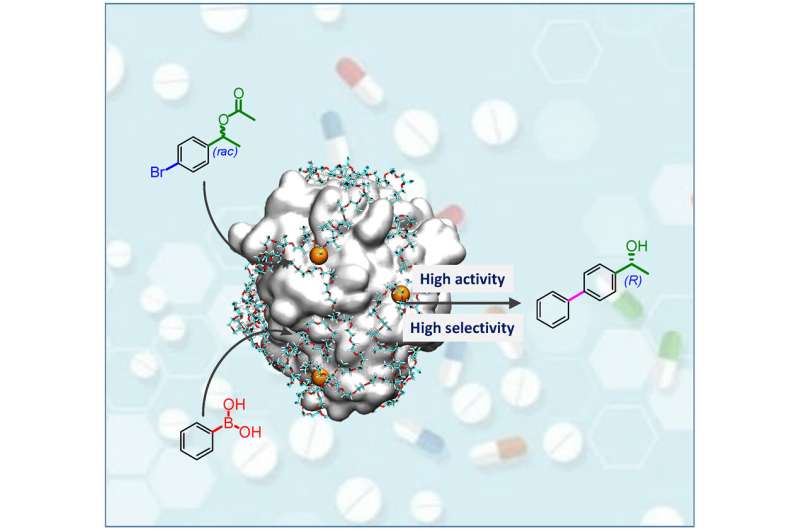This article has been reviewed according to Science X's editorial process and policies. Editors have highlighted the following attributes while ensuring the content's credibility:
fact-checked
trusted source
proofread
Enzyme-metal, single-atom hybrid catalysts for efficient one-pot chemoenzymatic reactions

The merging of different types of catalysis including enzymatic, homogeneous, and heterogeneous catalysis is fundamentally important for understanding both catalysis at the atomic level and the design of novel hybrid catalysts. The latter strives for the ideal catalyst that can drive complex tandem reactions efficiently in a one-pot manner and simplify the whole chemical production and separation process. Artificial enzymes that merge enzymatic, homogeneous, and heterogeneous catalysis provide a promising platform for developing novel hybrid catalysts that can achieve this goal efficiently under ambient conditions.
Directed evolution has been applied to tailor the active site of an enzyme with high efficiency, and artificial metalloenzymes have been generated by replacing the original metal atom at the active site with a new one. These methods are successful but usually only engineer the original active sites of enzymes, and this implies that the engineered enzyme may still be limited to catalyzing a single reaction.
Inspired by the atomically dispersed metal catalysts that make a bridge between the homogeneous and heterogeneous catalysis, it is proposed that anchoring the metal single atoms to the nonactive sites of an enzyme can lead to an artificial enzyme with both its original active site and the new active sites of metal single atoms, merging the enzymatic and single-atom catalysis.
Recently, a research team led by Prof. Jun Ge from Tsinghua University reported the first enzyme-metal, single-atom hybrid catalyst that was constructed by a photochemical approach. The Pd single atoms anchored lipase (Pd1/CALB-P) shows excellent activity and selectivity in the one-pot chemoenzymatic cascade reaction to asymmetric synthesize (R)-1-(4-biphenyl) ethanol.
It can efficiently drive one-pot cascade reactions in aqueous solution at 30 oC to achieve facile synthesis of chiral biaryl alcohols, which are important pharmaceutical intermediates that traditionally require complex synthesis procedures.
The rate of (R)-1-(4-biphenyl) ethanol formation catalyzed by Pd1/CALB-P is more than 30-fold higher than that of the combination of commercial palladium on carbon (Pd/C) and lipase-pluronic conjugate (CALB-P). The enzyme-metal, single-atom hybrid catalyst provides a promising strategy for effectively merging enzymatic and single-atom catalysis. The results were published in the Chinese Journal of Catalysis.
More information: Xiaoyang Li et al, Enzyme-metal-single-atom hybrid catalysts for one-pot chemoenzymatic reactions, Chinese Journal of Catalysis (2022). DOI: 10.1016/S1872-2067(22)64179-2
Provided by Chinese Academy of Sciences





















